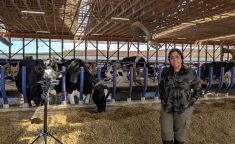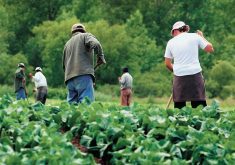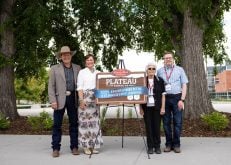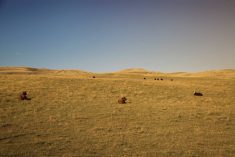Have you been itching to buy temperature and moisture measuring cables for your grain bin? Or maybe an imaging drone or some fancy soil sensors?
If so, there may be up to $150,000 available to you.
Through its new five-year Sustainable Canadian Agricultural Partnership, Ottawa and the province will split the cost of a number of items that fall into “funding streams” with titles such as Efficient Grain Handling and Farm Technology.
Read Also
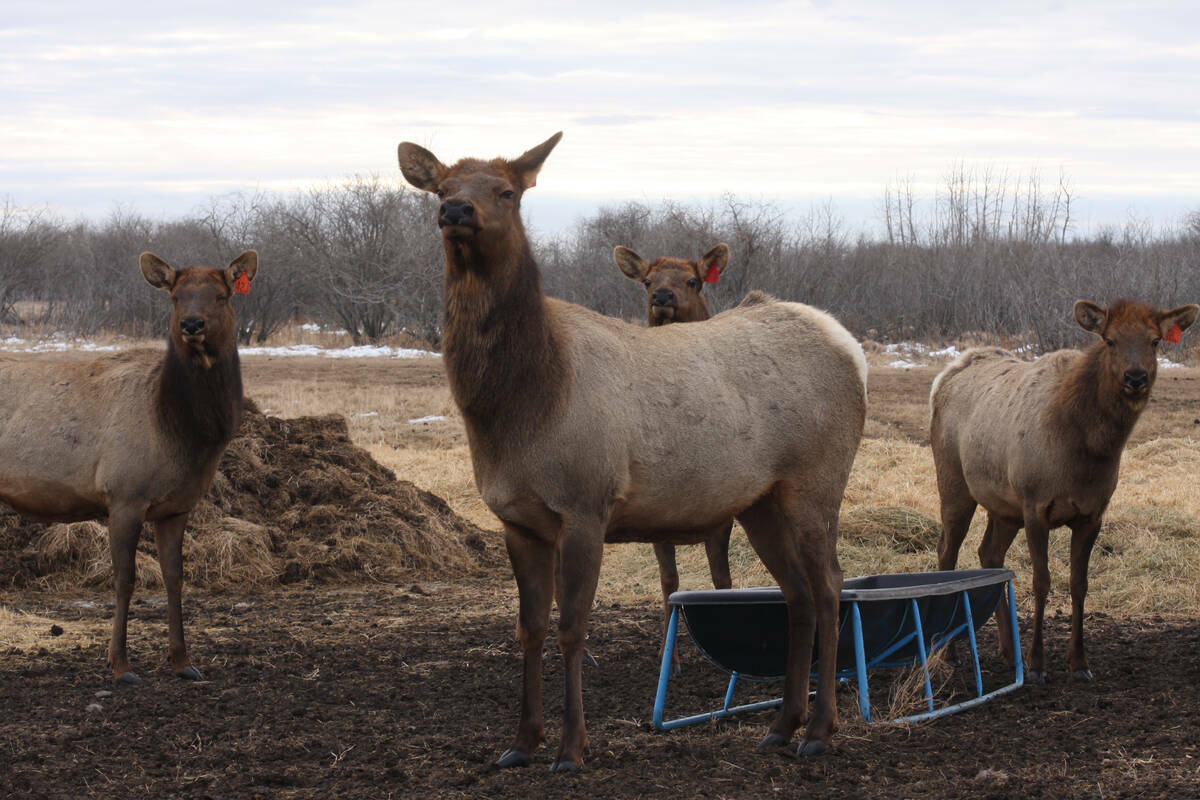
Cervid harvest preserves to be developed in the province under Bill 10
The Government of Alberta has given approval for creation of cervid harvest preserves.
Many are carryovers from the previous five-year funding agreement, the Canadian Agricultural Partnership, but the pot of cash has been topped up and the door re-opened to past grant recipients.
“One change is that they’re new for the coming year,” said Paul Jungnitsch of Alberta Agriculture and Irrigation. “It’s a new funding framework. If a farmer was topped out in the previous CAP program, they can start again in this one.”
However, applicants can’t afford to dawdle, said Jungnitsch.
“The previous CAP program was over five years and if they didn’t get (an application) done in the first year, there were extensions and amendments. This time there’s no extensions so projects have to be completed in this initial 2023-24 year.”
The Sustainable CAP (as many are calling it) covers a wide range — not surprising for a program that will cost $3.5 billion nationally over its five-year term — including business risk management programs such as AgriStability.
Each province has its own suite of programs aimed at boosting the sustainability of farms, either through making them more efficient or allowing them to adopt environmentally friendly practices.
Alberta’s deal with Ottawa is for $508 million but while program funds will flow over the five years, programs such as Efficient Grain Handling and Farm Technology may be revamped from year to year.
“So effectively it will be a different program going ahead after this year,” Jungnitsch said.
The 2023-24 version of the Farm Technology program is divided into two parts.
The Farm Technology Stream is the big one, offering grants of up to $48,000 per farm for items such as agriculture-specific drones, digitally-connected weather stations and “smart system” features such as digital sensors and data collection.
The cost of these devices is split 50-50 between the farmer and government, and that’s also true in the security stream, although grants there are a maximum of $2,000 per farm.
“The Farm Security Stream includes projects around remote monitoring, remote fuel tank monitors, motion detectors, GPS equipment tags — things like that,” said Jungnitsch.
The full list of eligible projects is at alberta.ca/sustainable-cap.aspx.
“They can go through and eyeball what’s eligible and what’s ineligible as well,” said Jungnitsch. “There’s a bit of an open category too if they can make a case for something.”
A general rule in the farm tech stream is that the technology must be commercially available and demonstrated to work in Alberta but not widely adopted, he said.
“It’s meant to encourage adoption of things that are going to be useful rather than things that are already standard practice,” he said. “It’s an interesting area to play in. It goes across all types of industries in agriculture. It deals with livestock, dairy, cropping, an extremely wide variety of applicability in agriculture.”
Applicants must be primary producers, be responsible for a crop, bee or livestock operation that produces at least $25,000 worth of farm commodities annually, and not be a landlord whose only interest in an operation is land ownership.
They also must have either a valid and current Alberta Environmental Farm Plan certificate or completion letter or obtain their certificate or completion letter before the end of the project term.
Some previous versions of the farm technology program did not allow producers to buy the applied-for equipment until the application was submitted, said Jungnitsch. Purchases are now retroactive to April 1, the start of the Sustainable CAP program.
“As long as you purchased it on or after April 1 you can apply afterwards and still get funding,” he said.
The Efficient Grain Handling program assists producers with reducing energy consumption for grain drying. Up to $100,000 is available, again on a 50-50 cost-share arrangement.
“The grain handling program is generally there to support more efficient energy use, which is quite a big thing right now and helpful for producers to cut their energy costs,” said Jungnitsch.
Like farm technology, it isn’t a “business as usual” funding program; it encourages the purchase of grain handling components that significantly improve energy efficiency over standard practices.
That means equipment such as aeration fans and ducts, grain elevators and conveyors, hopper bins and standard grain dryer configurations are considered “standard equipment” and not eligible under the program on their own.
Still, there’s a long list of categories that are eligible. A few examples are enclosed dryer roofs or dryer covers, variable speed drives for electric motors, temperature and moisture monitoring cables for in-bin drying systems, and costs to install a natural gas pipeline to a grain dryer.
Jungnitsch has a few tips for producers when applying.
“A big one is the applicant name needs to match the name on the invoices and receipts,” he said. “The application needs a handwritten signature and must have a detailed breakdown of expenses for exactly what they’re applying for. And of course the receipts have to be within the dates of the program.”




